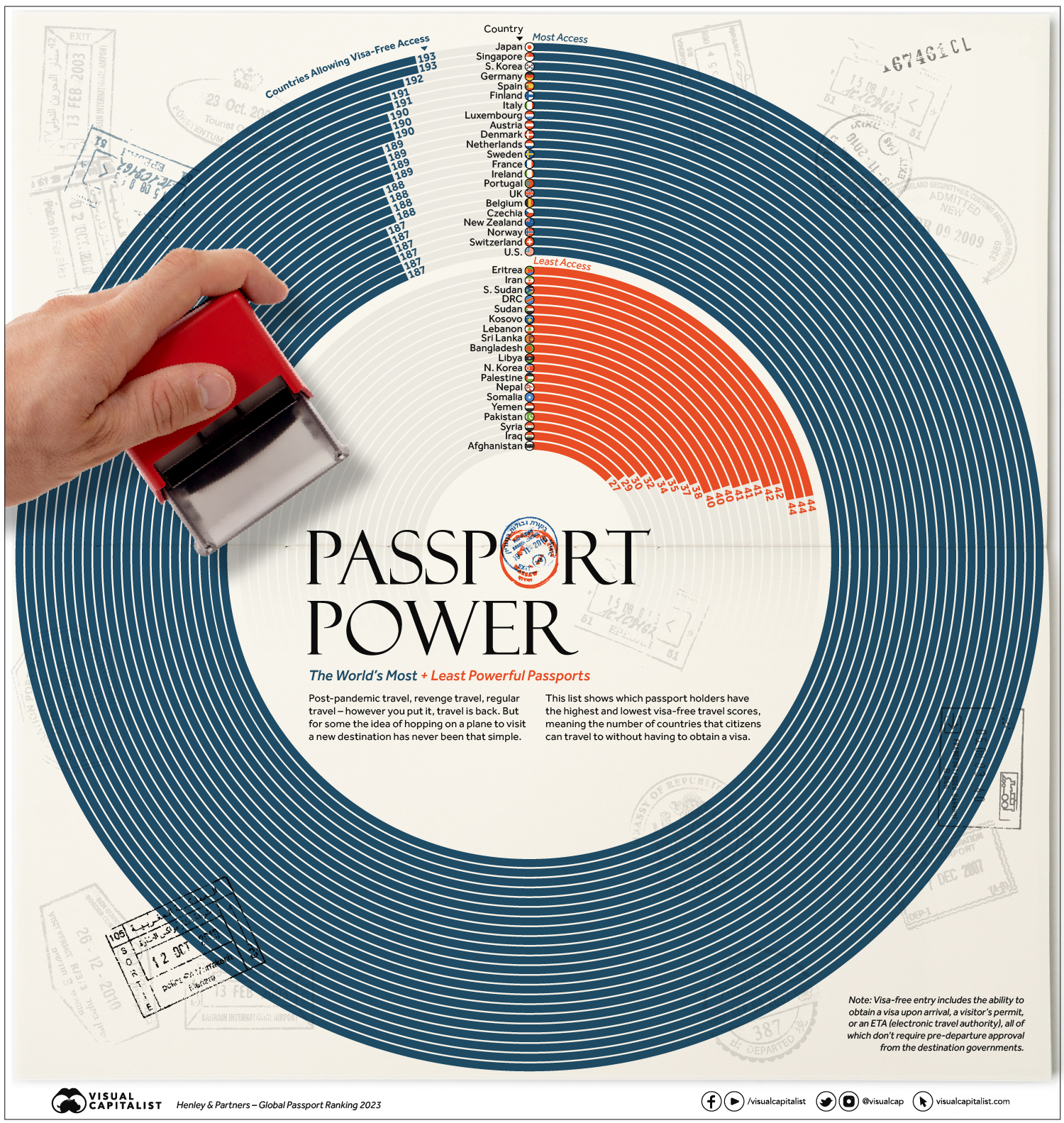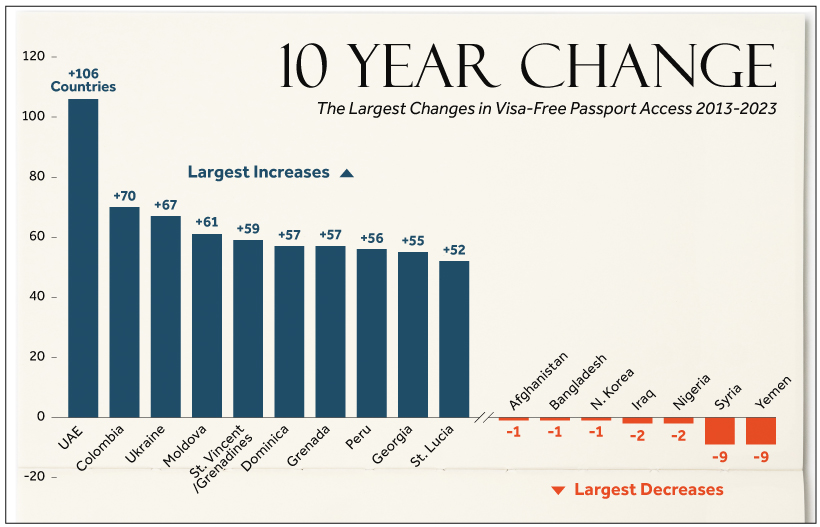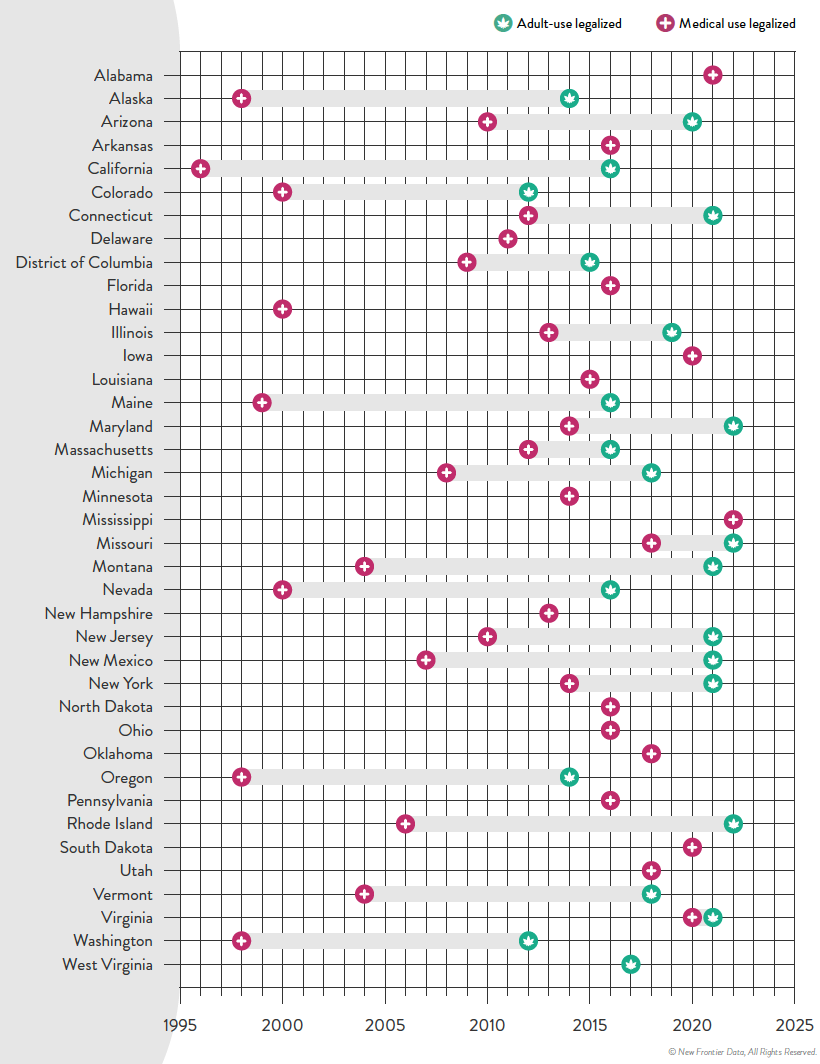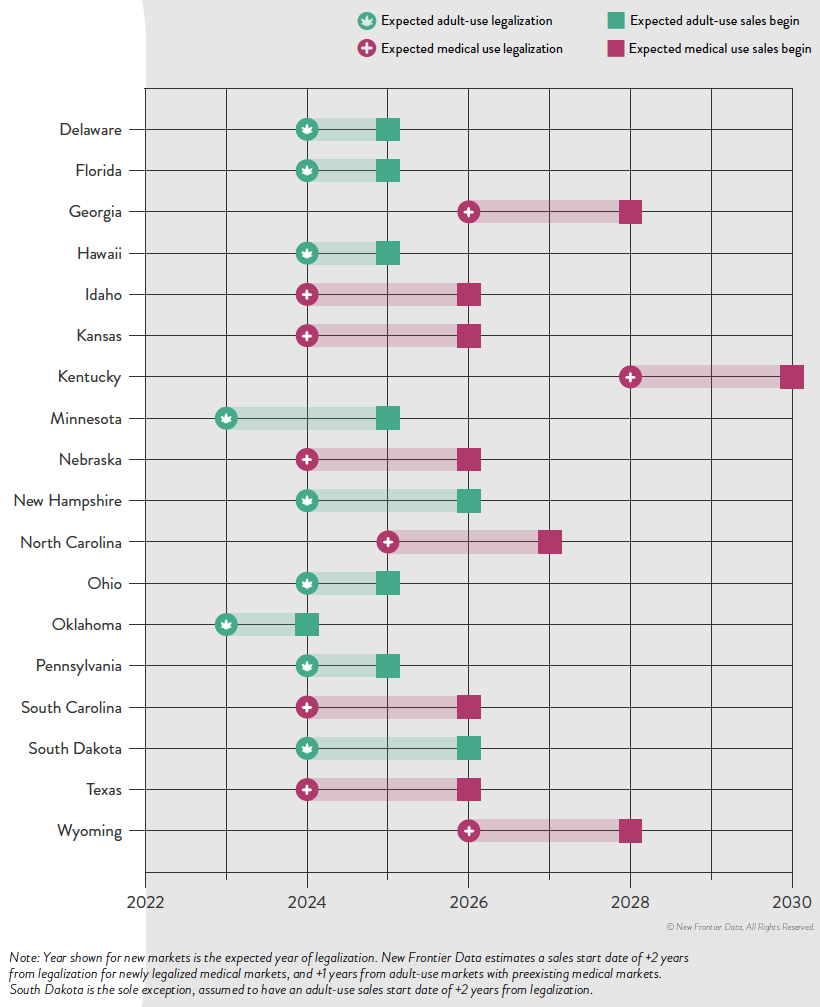Which Countries Hold the Most U.S. Debt?
Visualizing 90 Years of Stock and Bond Portfolio Performance
Visualizing the Link Between Unemployment and Recessions
Timeline: The Shocking Collapse of Silicon Valley Bank
Mapped: The Largest 15 U.S. Cities by GDP
Timeline: The Shocking Collapse of Silicon Valley Bank
Decoding Google’s AI Ambitions (and Anxiety)
Ranked: America’s 20 Biggest Tech Layoffs Since 2020
Infographic: Generative AI Explained by AI
Infographic: 11 Tech Trends to Watch in 2023
Ranked: The U.S. Banks With the Most Uninsured Deposits
De-Dollarization: Countries Seeking Alternatives to the U.S. Dollar
Which Countries Hold the Most U.S. Debt?
The Richest People in the World in 2023
Charted: 30 Years of Central Bank Gold Demand
Timeline: Cannabis Legislation in the U.S.
Visualizing the Composition of Blood
Visualizing the Relationship Between Cancer and Lifespan
Explainer: What to Know About Monkeypox
Visualizing How COVID-19 Antiviral Pills and Vaccines Work at the Cellular Level
Where are Clean Energy Technologies Manufactured?
Mapped: Asia’s Biggest Sources of Electricity by Country
Which Countries are Buying Russian Fossil Fuels?
Mapped: Europe’s Biggest Sources of Electricity by Country
Visualizing the Scale of Global Fossil Fuel Production
Mapped: Minimum Wage Around the World
Mapped: The Largest 15 U.S. Cities by GDP
Visualized: The Most (and Least) Expensive Cities to Live In
Mapped: The Population of India’s States Compared with Countries
Mapped: Which Countries Have the Highest Inflation?
Charted: 30 Years of Central Bank Gold Demand
Visualizing U.S. Consumption of Fuel and Materials per Capita
The Periodic Table of Commodity Returns (2013-2022)
Visualizing 25 Years of Lithium Production, by Country
Ranked: The World’s Largest Copper Producers
Visualizing the Flow of Energy-Related CO2 Emissions in the U.S.
Chart: Automakers’ Adoption of Fuel-Saving Technologies
Explainer: What to Know About the Ohio Train Derailment
Infographic: 11 Tech Trends to Watch in 2023
A Visual Crash Course on Geothermal Energy
Published
on
By
Depending on your passport, travel can be as simple as just booking flights, finding a hotel, and, then simply going.
But for many across the world, it’s not that easy—a number of passport holders need to obtain a travel/tourist visa prior to arrival. These visas typically require approval from the destination country’s government that can take weeks or months.
Japanese passport holders, for example, are able to visit 193 countries without pre-approval (nearly every country on Earth). Afghans, on the other hand, can only visit 27 countries with the same level of ease.
This ranking uses data from Henley & Partners, which determines the number of countries to which a passport holder has visa-free access.
First let’s look at every country’s position in the ranking in the table below:
Visas are imposed by some countries to make it easier to track visitors, allowing a country to assess whether said passport-holder may be a risk for illegal immigration, crime, acts of terror, or covert surveillance.
For example, both Russia and China require American passport holders to obtain visas prior to travel, and vice versa.
When it comes to the most powerful passports, most of the top 20 are issued by countries in Asia or Europe, with the exception of New Zealand and the United States.
Due to multiple ties in the rankings the U.S. technically ranks 17th, having visa-free access to 187 countries, on par with Norway, New Zealand, and Switzerland.
Ranking 66th, Ukraine’s passport has actually seen drastic improvement over the last decade, currently getting visa-free access to 144 countries. It has yet to be seen how this will change in the wake of the Russia/Ukraine conflict.
Many of least powerful passports come out of war-torn and politically unstable nations. As visas for travel are typically required to counter illicit activity, these nations are often flagged whether justly or not.
One immediate standout among the least powerful passports is North Korea. The insular nation has visa-free access to 40 countries, ranking it above eight other passports on the list.
Most North Koreans who travel abroad do so only in extremely special circumstances for work, study, or athletic competitions. Leisure travel out of North Korea does not happen, but technically, North Koreans can visit countries like Haiti, St. Vincent & the Grenadines, Palestine, and Kyrgyzstan, among others without a visa.
From a big picture standpoint, the world’s travelers have seen their access improve significantly over the last 10 years. If you’re a citizen of the UAE, for example, your prospects for visa-free travel have improved by 100+ countries over the last decade.
Here’s a closer look at 15 countries with the greatest change in visa-free access:
On the other hand, other countries have fared poorly, with some actually losing access to destinations since 2013. Yemen and Syria are tied for first place, having lost visa-free access to nine countries over the last 10 years.
Here’s a look at 15 countries who experienced the biggest negative change:
Looking at the tables above, it’s apparent that the world has generally become more open in recent years.
Overall, the power of a passport is almost directly reflective of the political state of the world. World powers and rich nations typically have free flow of travel, but those facing instability or war are often also face barriers when wanting to go abroad.
How the Russian Invasion of Ukraine Impacts Science and Academia
Which Countries are the Most Polarized?
Ranked: The Top 25 Islands to Visit in 2022
Comparing the Carbon Footprint of Transportation Options
10 Travel Destinations for Post-Pandemic Life
How Powerful is Your Passport in a Post-Pandemic World?
Pandemic Recovery: Have BEACH Stocks Bounced Back?
The Business of Airbnb, by the Numbers
At the federal level, cannabis is illegal, but state laws differ. This graphic looks at the timelines of cannabis legislation in the U.S.
Published
on
By
At the federal level, cannabis is still considered an illegal substance. That said, individual states do have the right to determine their own laws around cannabis sales and usage.
This visual from New Frontier Data looks at the status of cannabis in every state and the timeline of when medical and/or recreational use became legal.
In the U.S., the oldest legalese concerning cannabis dates back to the 1600s—the colony of Virginia required every farm to grow and produce hemp. Since then, cannabis use was fairly wide open until the 1930s when the Marihuana Tax Act was enforced, prohibiting marijuana federally but still technically allowing medical use.
Jumping ahead, the Controlled Substances Act was passed in 1970, classifying cannabis as Schedule I drug—the same category as heroin. This prohibited any use of the substance.
However, the 1970s also saw a counter movement, wherein many states made the move towards decriminalization. Decriminalization means that although possessing cannabis remained illegal, a person would not be subject to jail time or prosecution for possessing certain amounts.
By the 1990s, some of the first states passed laws to allow the medical usage of cannabis, and by 2012 two states in the U.S.—Washington and Colorado—legalized the recreational use of cannabis.
The MORE Act (the Marijuana Opportunity Reinvestment and Expungement Act) was passed in the House early 2022, and if made law, it would decriminalize marijuana federally.
“This bill decriminalizes marijuana. Specifically, it removes marijuana from the list of scheduled substances under the Controlled Substances Act and eliminates criminal penalties for an individual who manufactures, distributes, or possesses marijuana.”– U.S. Congress
Cannabis still remains illegal at the federal level, but at the state levels, cannabis is now fully legal (both for medicinal and recreational purposes) in a total of 22 states.
Over 246 million Americans have legal access to some form of marijuana products with high THC levels. Looking to the future, many new cannabis markets are expected to open up in the next few years:
The earliest states expected to open up next for recreational cannabis sales are Minnesota and Oklahoma. There is always a lag between legalization and actual sales, wherein local regulatory bodies and governments set standards. States like Kentucky, on the other hand, aren’t likely to even legalize medicinal cannabis until 2028.
It’s estimated that by 2030, there will be 69 million cannabis consumers in the country, up 33% from 2022.
Overall, the U.S. cannabis market is likely an important one to watch as legal sales hit $30 billion in 2022. By the end of the decade, that number is expected to be anywhere from $58 billion to as much as $72 billion.
The Drive for a Fully Autonomous Car
Mapped: The World’s Happiest Countries in 2023
Ranked: The U.S. Banks With the Most Uninsured Deposits
Mapped: The Largest 15 U.S. Cities by GDP
Visualizing the Link Between Unemployment and Recessions
Vintage Viz: China’s Export Economy in the Early 20th Century
Visualizing 90 Years of Stock and Bond Portfolio Performance
Timeline: The Shocking Collapse of Silicon Valley Bank
Copyright © 2023 Visual Capitalist